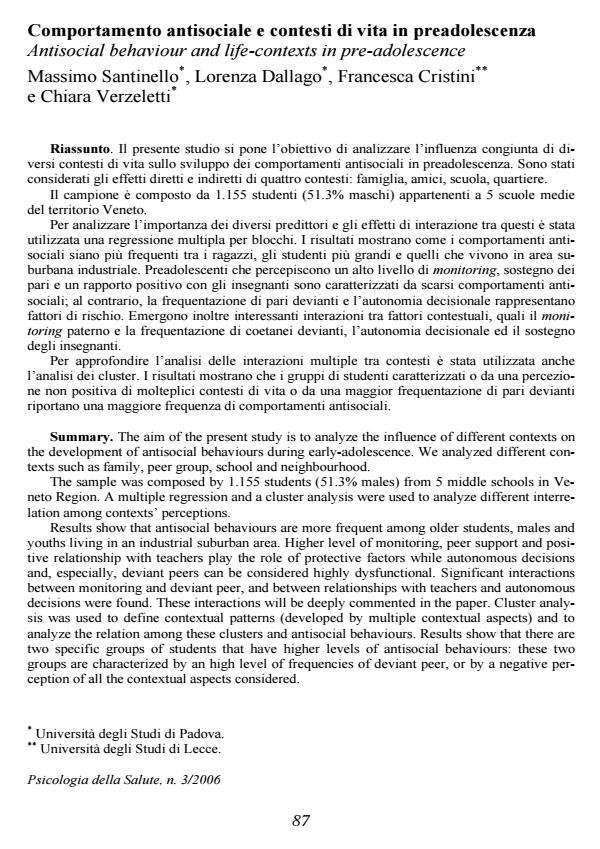Comportamento antisociale e contesti di vita in preadolescenza
Journal title PSICOLOGIA DELLA SALUTE
Author/s Massimo Santinello, Lorenza Dallago, Francesca Cristini, Chiara Verzeletti
Publishing Year 2007 Issue 2006/3
Language Italian Pages 24 P. 87-110 File size 319 KB
DOI
DOI is like a bar code for intellectual property: to have more infomation
click here
Below, you can see the article first page
If you want to buy this article in PDF format, you can do it, following the instructions to buy download credits

FrancoAngeli is member of Publishers International Linking Association, Inc (PILA), a not-for-profit association which run the CrossRef service enabling links to and from online scholarly content.
The aim of the present study is to analyze the influence of different contexts on the development of antisocial behaviours during early-adolescence. We analyzed different contexts such as family, peer group, school and neighbourhood. The sample was composed by 1.155 students (51.3% males) from 5 middle schools in Veneto Region. A multiple regression and a cluster analysis were used to analyze different interrelation among contexts’ perceptions. Results show that antisocial behaviours are more frequent among older students, males and youths living in an industrial suburban area. Higher level of monitoring, peer support and positive relationship with teachers play the role of protective factors while autonomous decisions and, especially, deviant peers can be considered highly dysfunctional. Significant interactions between monitoring and deviant peer, and between relationships with teachers and autonomous decisions were found. These interactions will be deeply commented in the paper. Cluster analysis was used to define contextual patterns (developed by multiple contextual aspects) and to analyze the relation among these clusters and antisocial behaviours. Results show that there are two specific groups of students that have higher levels of antisocial behaviours: these two groups are characterized by an high level of frequencies of deviant peer, or by a negative perception of all the contextual aspects considered.
Massimo Santinello, Lorenza Dallago, Francesca Cristini, Chiara Verzeletti, Comportamento antisociale e contesti di vita in preadolescenza in "PSICOLOGIA DELLA SALUTE" 3/2006, pp 87-110, DOI: